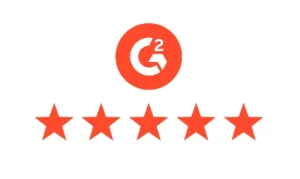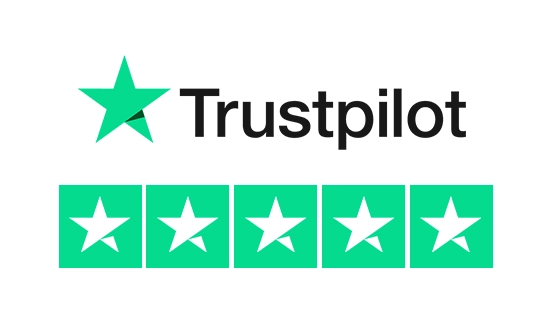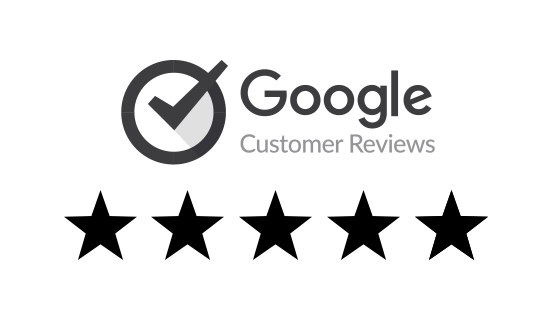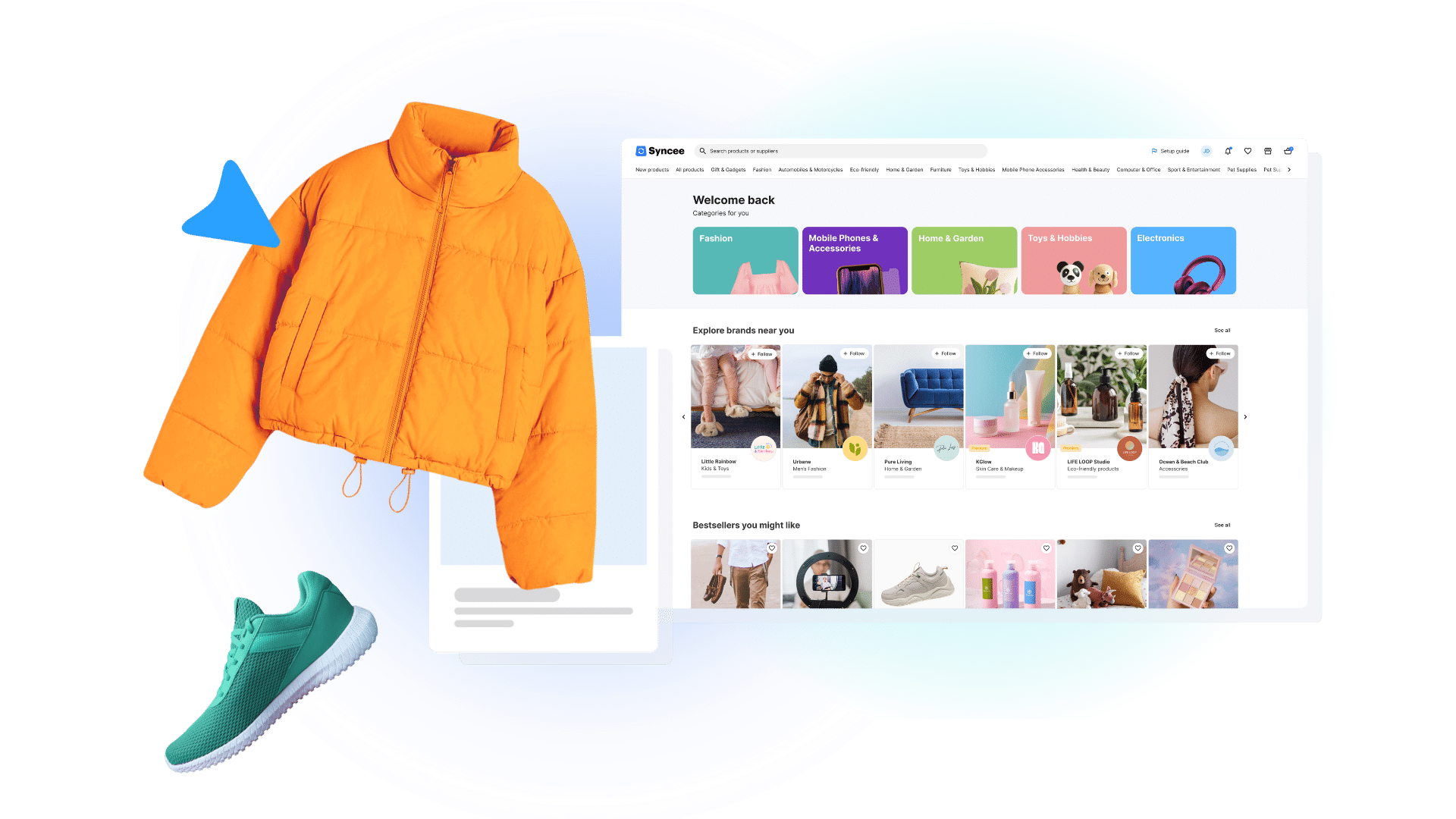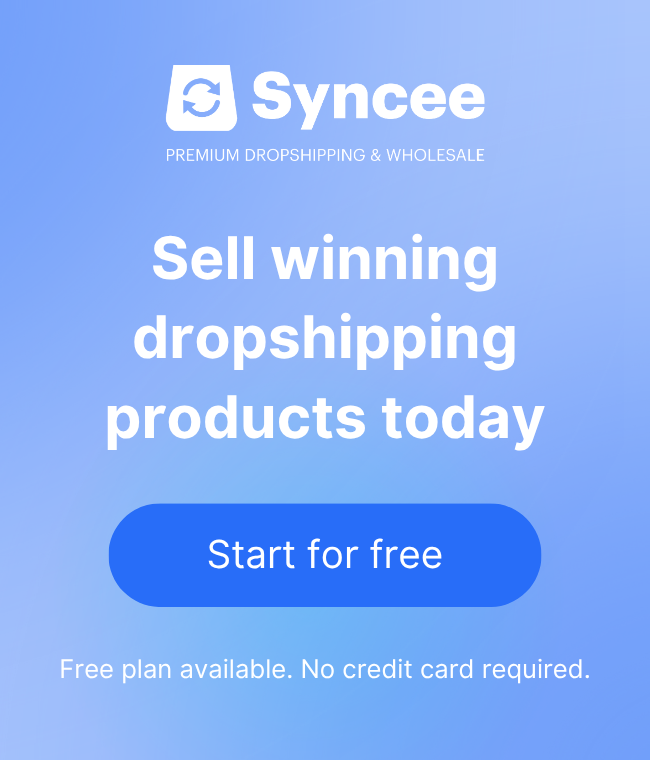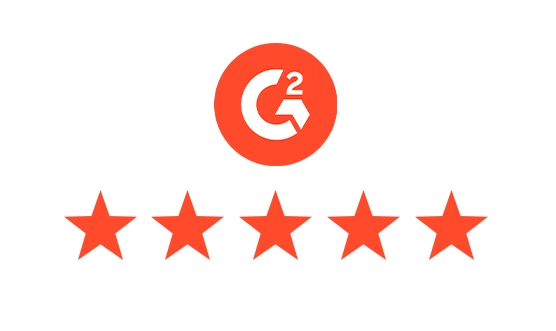In the dynamic world of ecommerce, staying ahead requires innovation and adaptability. One such innovation making waves is collective commerce with Syncee. This approach fosters collaboration between retailers and suppliers, enabling businesses to expand their product offerings without the traditional constraints of inventory management.
What is Collective Commerce?
Collective commerce is a collaborative dropshipping and wholesale model where online stores connect to sell each other’s products. One store becomes the retailer, while the other acts as the supplier—and vice versa. Unlike traditional models, here businesses can partner and co-grow through shared catalogs, synced inventories, and automated processes:
- Expand Product Offerings: Access a vast network of suppliers and add new products without holding inventory.
- Automate Operations: Utilize Syncee’s tools for product integration, inventory management, and order processing.
- Reach New Markets: Collaborate with suppliers worldwide to tap into new customer bases.
Whether you’re a small brand or an established online retailer, collective commerce empowers you to scale by working with like-minded businesses—not competing, but collaborating.
Syncee: A Platform for Mutual Growth
While Syncee provides the technology behind the scenes, the real innovation lies in the model as well It enables brands to operate as both a retailer and a supplier, allowing for dynamic partnerships. You can list your own products on Syncee’s marketplace and simultaneously sell others’ offerings in your store.
This is the essence of collective commerce—a circular economy in ecommerce, where everyone contributes, everyone benefits.
How to Build Strong Partnerships
To truly succeed in collective commerce, the key is intentional collaboration. This isn’t just about importing products—it’s about building lasting relationships with other brands and stores. When both sides treat the connection as a partnership rather than a transaction, it leads to more trust, more sales, and more growth.
Here’s how you can start building these win-win relationships:
1. Find Brand-Aligned Partners
Start by looking for businesses that share your values, aesthetics, or audience. For example, if you sell eco-friendly home goods, look for suppliers with sustainable wellness or lifestyle products. These shared themes allow your store to grow cohesively without confusing your brand identity.
Syncee makes this easier by providing filters, categories, and quality supplier profiles so you can browse like-minded businesses.
2. Communicate Like a Partner, Not Just a Buyer
Once you connect with a supplier on Syncee, don’t treat it as a one-way service. Reach out, introduce your store, and suggest collaborative ideas. You might co-create bundles, feature each other’s products in emails, or even run a seasonal campaign together.
This approach turns a simple integration into a collective commerce partnership.
3. Plan Collaborative Campaigns
One of the unique advantages of collective commerce is the opportunity to do shared marketing. You can work with your supplier or retail partners to launch:
- Joint giveaways
- Co-branded collections
- Themed sales events
- Blog swaps or Instagram takeovers
This type of brand cross-pollination helps you grow both your audiences and strengthens the value of your partnership.
The Kinks & Quirks LLC Success Story
A shining example of the power of collective commerce is the journey of Kinks & Quirks LLC. Founded in 1997, Kinks & Quirks began as a brick-and-mortar store specializing in unique and quirky art pieces. Transitioning to ecommerce in 2007, they faced challenges in inventory management and expanding their online presence.
Challenges Before Syncee:
- Inventory Management: Managing stock levels and product listings across multiple platforms was time-consuming and prone to errors.
- Limited Product Range: Expanding their catalog required significant investment in inventory.
- Operational Inefficiencies: Manual processes hindered scalability and growth.

Transformation with Syncee:
To overcome these challenges, Kinks & Quirks turned to collective commerce. The integration with Shopify allowed them to:
- Automate Inventory Management: Automated synchronization of product data reduced manual workload.
- Expand Product Catalog: Access to a wide range of suppliers enabled them to offer more products without holding inventory.
- Increase Sales: The streamlined operations led to approximately 30 additional sales in a short timeframe.
This transformation not only improved their operational efficiency but also positioned Kinks & Quirks as a small business success story in the ecommerce space.

The Win-Win of Two-Way Collaboration
What makes collective commerce truly powerful is its two-way benefit. When stores partner, each can act as a retailer and supplier:
- You can list your products on Syncee so others can sell them—growing your brand reach.
- At the same time, you can import products from partner suppliers to enrich your store.
- This model works great for stores with unique inventory looking for more exposure and for stores needing a broader, curated product range.
Imagine a skincare brand partnering with a wellness shop: both stores sell each other’s products while keeping their brand identities intact. This is collective commerce in action—synergy, not competition.
Benefits of Syncee
Implementing Syncee in collective commerce offers numerous advantages.
1. Dual-Role Flexibility
Operate as a supplier, retailer, or both. Switch roles based on business goals, and unlock new revenue streams in either direction.
2. No Inventory Risk
Retailers can sell products without the need to invest in stock upfront. This model reduces financial risk and allows for more flexible business operations.
3. Diverse Product Selection
With access to thousands of suppliers, retailers can diversify their offerings, catering to a broader customer base and increasing sales potential.
4. Automated Processes
Syncee automates key aspects of the ecommerce workflow, including:
- Product Importation: Easily add products from suppliers to your store.
- Inventory Synchronization: Keep stock levels and product details up-to-date.
- Order Processing: Streamline the fulfillment process from order placement to delivery.

5. Seamless Platform Integration
Syncee integrates with major ecommerce platforms like Shopify, WooCommerce, and BigCommerce, ensuring a smooth experience for users.
6. Global Supplier Network
Retailers can connect with suppliers from around the world, enabling them to offer products that appeal to various markets and customer preferences.
Leveraging Collective Commerce
To effectively utilize Syncee for collective commerce, businesses can:
- Identify Compatible Suppliers: Seek out suppliers whose products align with your brand’s ethos and customer base.
- Utilize Syncee’s Platform: Leverage Syncee’s tools for product integration, inventory management, and order processing.
- Monitor Performance: Regularly assess which products perform best and adjust offerings accordingly.
- Engage in Collaborative Marketing: Work with suppliers on joint promotions to maximize reach and sales.

Why Store Traffic Matters: A Message for Beginner Dropshippers
One of the most important principles in ecommerce—and often overlooked by beginners—is that no traffic means no sales. Just like a brick-and-mortar store needs foot traffic to make a sale, your online store relies on visitors to convert into buyers.
Imagine opening a beautiful boutique with premium products and amazing prices, but it’s located in an alley no one walks through. That’s exactly what an online store without traffic looks like.
Example: The Numbers Behind Sales
Let’s say you generate 1,000 visitors per day to your online store. If your conversion rate is 1%, that means:
- 10 sales per day
- With an average order value of $45, you’re generating $450/day in revenue
Now consider the cost of acquiring traffic:
| Platform | Average Cost per Click (CPC) |
|---|---|
| Facebook/Instagram Ads | $0.70 – $1.20 |
| Google Ads (Search) | $0.80 – $2.00 |
So, 1,000 visitors could cost:
- ~$1,000 via Google Ads (at $1 CPC)
- ~$800 via Meta Ads (at $0.80 CPC)
To break even or turn a profit, your store needs to maintain a healthy gross margin on each sale and work to optimize its conversion rate.
Campaign Profitability Calculator
Use this simple formula to estimate ROI:
(Average Order Value × Conversion Rate × Visitors) – (CPC × Visitors) = Profit
Example Calculation:
- Avg. Order Value: $45
- Conversion Rate: 1%
- Visitors: 1,000
- CPC: $0.80
Revenue = $45 × 1% × 1,000 = $450
Cost = $0.80 × 1,000 = $800
Profit = $450 – $800 = –$350 (Loss)
Now let’s optimize:
- Conversion Rate increased to 2%
- Profit = $900 – $800 = $100 profit
Lesson: Drive targeted traffic and constantly work on improving your store’s design and conversion funnel to increase profitability.
Tools like Syncee help you focus on marketing and customer experience while handling fulfillment, letting you scale profitably.
The Future of Collective Commerce with Syncee
This model isn’t just a trend—it’s the future of ecommerce. As more small businesses look for flexible ways to grow without heavy overhead, collective commerce offers a proven solution.
- User-Friendly Interface: Designed for ease of use, even for those new to dropshipping or wholesale.
- Reliable Supplier Network: Connect with vetted suppliers offering high-quality products.
- Flexible Business Model: Choose between dropshipping, wholesale, or a combination of both to suit your business needs.
- Scalability: Easily scale your business by adding new products and reaching new markets without the complexities of traditional inventory management.
You’re not just selling products anymore—you’re joining a movement of connected commerce. You help others grow, and they help you.
Final Tips to Thrive with Collective Commerce
- Start small, but be strategic – Choose a few strong partners first and build trust over time.
- Track performance – Use analytics tools (like Syncee’s built-in dashboard or Google Analytics) to monitor sales from partner products.
- Update often – Refresh your catalog with seasonal items or trending pieces to keep your collective commerce store relevant.
- Educate your audience – Tell your customers about your partnerships. Use blog posts or product stories to highlight the brands you’re collaborating with.
Conclusion
In the competitive world of ecommerce, adaptability and efficiency are key to success. Collective commerce is a way for retailers and suppliers to collaborate, offering a win-win solution that drives growth and customer satisfaction.
Whether you’re a retailer looking to diversify your offerings or a supplier aiming to reach new markets, collective commerce with Syncee means the resources and support to help your business thrive.
Frequently Asked Questions
What is collective commerce?
Collective commerce is a collaborative ecommerce model that allows retailers to sell products from other businesses without holding inventory. Powered by Syncee’s automation and integration tools, it enables efficient product sharing, streamlined order fulfillment, and seamless connection with global suppliers.
How does collective commerce benefit small businesses?
Small businesses can expand their product catalog, enter new markets, and reduce operational overhead by partnering with suppliers through collective commerce. It minimizes risk while maximizing growth opportunities through automation and collaboration.
Do I need a Shopify store to use Syncee?
While Syncee integrates perfectly with Shopify, it also supports other major ecommerce platforms. However, Shopify users benefit from particularly seamless synchronization and faster setup, making it a popular choice.
Can I sell products globally through collective commerce?
Yes. One of the key advantages of collective commerce is access to a global supplier network. Retailers can import and sell products from international suppliers, enabling them to scale their business beyond borders.



